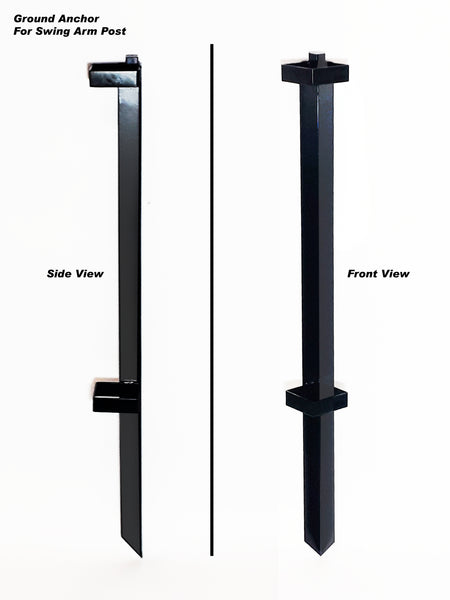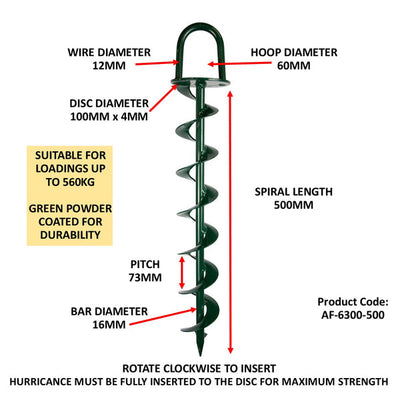Check Out the Various Sorts Of Ground Anchor for Your Following Job
From auger anchors, which stand out in diverse soil problems, to stake supports designed for short-lived installments, the choices are various. Furthermore, concrete and screw supports existing distinct benefits in certain scenarios, while deadman supports are customized for applications requiring resistance to lateral pressures.

Auger Anchors
Auger anchors are a popular selection in various construction and landscaping tasks as a result of their special design and reliable securing capabilities. These supports include a helical screw-like shaft that is driven right into the ground, enabling for a stable and safe and secure hold. The spiral style promotes easy installation and makes the most of resistance against side pressures, making auger anchors particularly efficient in applications such as fence, momentary frameworks, and erosion control.
The setup procedure of auger anchors is relatively straightforward. Auger anchors can be conveniently eliminated and recycled, which adds to their cost-effectiveness and sustainability.
One of the significant advantages of auger anchors is their ability to disperse loads equally throughout the bordering dirt, reducing the threat of dirt disturbance and decreasing ecological influence. Furthermore, they are much less prone to heaving or loosening gradually contrasted to conventional anchoring techniques. As a result, auger anchors are an outstanding choice for projects calling for dependable and resilient anchoring services.

Risk Anchors
When it involves safeguarding frameworks in a selection of outdoor applications, risk supports supply a simple and reliable solution. These anchors are commonly built from resilient products such as steel or aluminum, created to endure ecological anxieties while supplying optimal stability. Their straightforward layout permits fast installation, making them a suitable choice for long-term or momentary anchoring demands.
Stake supports are specifically helpful in safeguarding outdoors tents, covers, and other light-weight frameworks versus wind and climate. They function by being driven into the ground at an angle, creating a solid hold that stands up to pull-out pressures - Ground Anchor. The efficiency of stake anchors depends upon a number of factors, consisting of soil kind, moisture content, and the angle of setup
For included safety, several stake supports include attachment factors for ropes or straps, permitting stress modifications as needed. In applications such as landscaping or building, they can effectively maintain equipment or structures on unequal terrain. In general, stake supports give a versatile and economical option for safeguarding various outside installations, making them a preferred choice for contractors and DIY enthusiasts alike.
Concrete Anchors
Concrete anchors provide a robust service for securing structures to concrete surfaces, making sure stability and security in numerous applications. These supports are necessary for jobs ranging from residential buildings to large-scale commercial setups. They are available in various types, consisting of development anchors, glue anchors, and undercut anchors, each made for certain lots requirements and ecological conditions.
Sticky supports utilize high-strength epoxy or resin to bond the support to the concrete, offering remarkable load-bearing capabilities, especially in split concrete scenarios. Undercut anchors create an unique shape within the concrete, supplying remarkable holding power, especially in applications where tensile loads are prevalent.
When carried out properly, concrete anchors significantly boost the structural integrity of different jobs, making them crucial in modern-day construction practices. Recognizing the particular needs of your project will aid in selecting the best kind of concrete support for the job.
Screw Anchors

Screw anchors are a flexible fastening solution that can be efficiently utilized in a variety of applications where conventional concrete supports might not suffice. These anchors contain a helical style that permits them to be conveniently driven right into the ground, making them ideal for use in soil and various other substrates. Their one-of-a-kind framework supplies outstanding holding power and resistance to pull-out forces, making them ideal for numerous hop over to these guys jobs, from landscaping to structural check here assistance.
One of the primary benefits of screw supports is their ease of installment. They require minimal tools and can often be mounted without the requirement for excavation, which saves both time and labor costs. In addition, screw supports can be gotten rid of and recycled, providing a sustainable solution for short-term applications.
Screw supports are especially valuable in areas where dirt conditions are testing, such as loose or sandy dirts. Their capability to be installed at differing midsts permits for customization based upon particular task requirements. Overall, screw supports provide a trustworthy and effective anchoring approach, making them an excellent option for designers and contractors seeking effective options for their tasks.
Deadman Anchors
Deadman supports act as a robust service for supporting structures in challenging problems, specifically where typical securing methods might drop brief. These supports contain huge, heavy objects buried underground, which produce resistance versus lateral forces. The layout commonly includes a straight part, such as a block of concrete or a steel plate, buried in the soil, to which straps or cable televisions are affixed.
The efficiency of deadman anchors hinges on their capability to distribute lots over a larger area, minimizing the danger of failing in unpredictable dirt problems. They are especially beneficial in applications such as retaining walls, short-lived structures, and slope stabilization, where soil movement can endanger the honesty of the structure.
Installation of deadman supports requires careful planning to guarantee they are put at the correct deepness and alignment, maximizing their load-bearing capacity. While they may need even more labor and material than lightweight supports, their reliability in adverse problems makes them vital for lasting projects. Additionally, deadman supports are versatile and can be adapted to numerous applications, making them a best selection for engineers dealing with special challenges in their projects.
Conclusion
Auger supports excel in diverse soil problems, while stake anchors suit short-lived applications. For concrete surfaces, development and adhesive anchors offer trustworthy options, and screw anchors use versatility in tough terrains.
Additionally, concrete and screw anchors present one-of-a-kind benefits in specific situations, while deadman anchors are tailored for applications needing resistance to side forces - Ground Anchor.Auger supports are a prominent option in various building and construction and landscaping tasks due to their one-of-a-kind layout and reliable anchoring capacities. They come in different types, consisting of development anchors, glue supports, and undercut anchors, each made for details lots needs and environmental conditions
Sticky anchors use high-strength epoxy or material to bond the support to the concrete, using remarkable load-bearing capacities, specifically in additional hints broken concrete situations. On the whole, screw supports give a trustworthy and efficient securing approach, making them an excellent option for contractors and designers seeking reliable solutions for their projects.